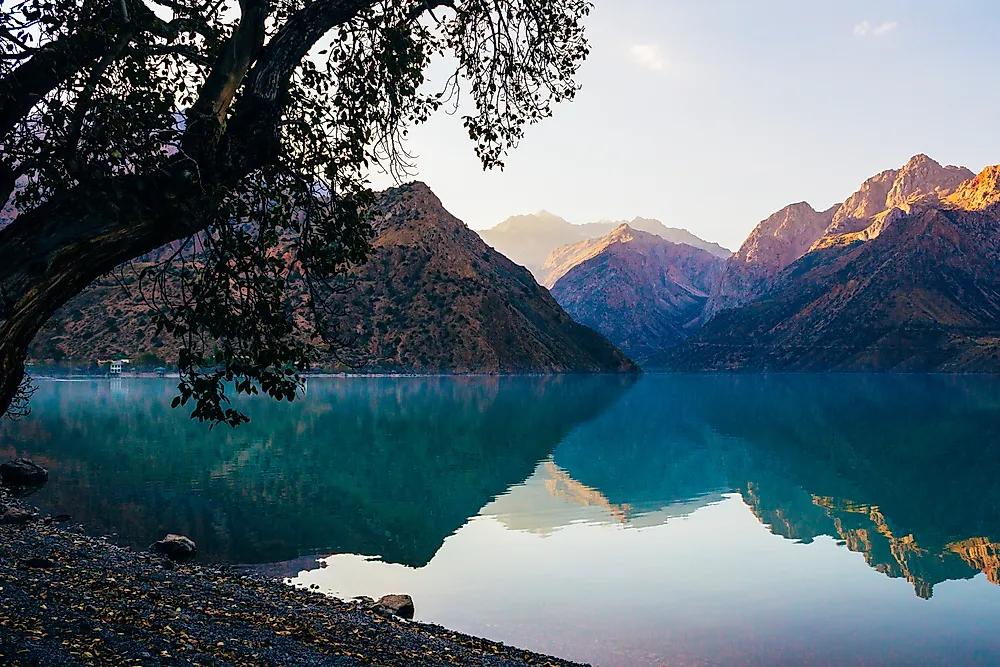Fann Mountains - Unique Places Around The World

Tajikistan is a small country in Asia that lies in between countries like China, Uzbekistan, and Kyrgyzstan. The country played a significant role in history, some of the cities built by Alexander the Great were in the present-day Tajikistan, and it was also central to the silk road. The country is mountainous and home to the famous Fann mountain ranges.
Description
One of the most uniquely breathtaking parts of the Pamir Mountains is the Fann Mountains also known as the fanns. The Fanns are located in Sughd province in Tajikistan.To the north of the Fann mountains is the Zarfshan range and the Gissar range borders the mountain in the south. The Fann Mountains extend from the Fandarya River to the Archmaydan River in the east west direction. Also included in the fans is the cluster of Marguzor lakes west of Archimedean.
Uniqueness
There are about a hundred peaks in the Fann mountains, most of which rise to altitudes of above 5,000 meters and elevations of about 1,500 meters. The Chimtarnga peak, the highest peak in the Fann Mountains is about 5,489 meters tall. Other peaks in the 5,000-meter range include Bodkhona peak at 5,138m, Big Hansa and Little Hansa peaks at 5,031m, Chapdara peak at 5,050m, Energia peak at 5,120m, and the Mirali peak at 5,132m. The peaks are crowned with snow for a major part of the year. The Finn mountains are also endowed with many lakes, the most outstanding being the Iskanderkul Lake. Other well known lakes in the fans are the Alaudin lakes found in the Chapdara river valley, Allo Lake, and Kulikalon Lake located on the northern slope of Chimtanga peak. The northern slopes have glaciers above 3,500 meters. Glaciers below this height are covered with debris and rocks.
Habitats
The area around Fann mountains receives an average annual rainfall of 400-500mm, most of which falls during the spring season. Temperatures range from 15°C to 16°C during the summer months and -5°C to -8°C in the winter months. The northern and southern slopes of the mountain differ greatly in term of insolation, humidity, and ground stabilization. The largely diverse vegetation landscape can be represented by the following ecosystems: wetland, nival glacier ecosystems, foothill semi desert and desert, high mountain desert ecosystem, midlow mountain semi savannah, high mountain middle steppe ecosystem, mid-mountain xerophytic light forest ecosystems, mid-mountain mesophylic forest ecosystems, and mid mountain coniferforest ecosystems. According to the variability in climate, altitude, and geomorphologic diversity the above vegetation landscapes form isolated islands.
Tourism
There is some level of tourist activity in the Fann Mountains, mostly for trekking and mountaineering. The most appropriate time to visit for trekking is between May and October and between July to September for mountaineering. There are a number of trekking routes that start at different trailheads such as Alaudin camp, Marguzorr lakes, Artush, and Iskander kul. The majority of the passes can be accessed through packing animals such as donkeys which can be hired from locals around the area. The numerous peaks of the mountains offer a great mix of both easy and hard climbs for hikers.
Threats
The Fann, being a major trekking and mountaineering zone, poses various threats to its visitors. The area is prone to a number of natural disasters including but not limited to landslides, earthquakes, extreme weather conditions, and bone crushing roads. Political upheaval is also a major threat to visitors, especially those from outside the country. A large part of the area is remote hence rescue services are not available. Another major danger that could threaten visitors is the landmines around the Uzbek border.











